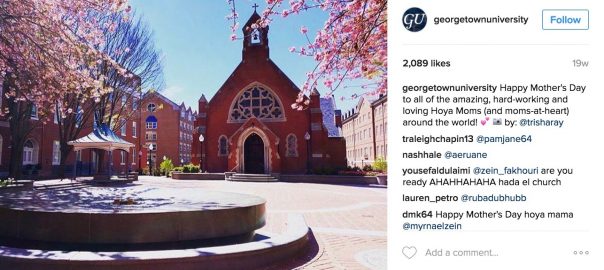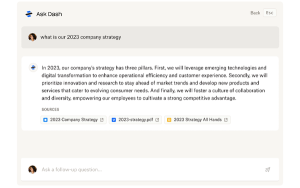Colleges are big business. Schools have huge marketing teams working full-time to build their brands. They’re looking for ways to boost admissions, build their brands, and make their campuses seem special.
Naturally, they’re turning to social marketing. You go where your market is, of course, and college students are all over social media.
That strategy is sound. Social media helps strengthen your reputation, bring your community together, and even recruit students.
But if everyone’s doing it, you need to do it well. So that you can learn by example, we’ve rounded up some of the best schools on social media, to figure out what makes them so good.
Let’s see what some of the best schools are doing on social media.
1. Appeal to your college community
First of all, despite how badly you want to reach new students, you can’t forget about the community you already have – your current students. You want students to stay at your school, enjoy their time, and come back to visit after they’ve graduated.
The obvious ways to do this are concerts, social events, and sports games. But social media plays a role too. When students connect with each other and share content, “school spirit” can flourish.
How Baylor University does it
Despite not having a huge following, Engagement Labs ranked Baylor University as the number one Facebook among US colleges. Its account receives more likes and comments per 1,000 followers than any other school.
But how does Baylor get such a small audience so incredibly engaged? The page has a very targeted, local focus, talking about things their students are interested in. And in Texas, that means college football:
Baylor also does a great job of engaging students about their daily life. People go to Facebook to interact and share stories, and Baylor’s content strategy encourages them to do so. Take this blog post about campus food:
The title makes readers feel a part of a special club: the Baylor Bears. And the description includes a call to action to “let us know,” inviting comments for more discussion.
Do it yourself
Post content that speaks directly to your community. This includes:
- Students’ stories about their favorite memories
- Behind-the-scenes looks at sports and cultural events
- Questions and polls that matter to your students
- Content about what campus life is like
In terms of how you talk about these things, questions and social calls-to-action that require a response in the form of a comment is often the most engaging.
2. Find interesting local content
That sense of “community” mentioned can extend beyond the university itself and into the actual physical community. Especially in small college towns where the town and the university go hand-in-hand. In these cases, sharing news and images from the area can make the town look like a wonderful place to spend your college years, serving as a great recruiting tool.
Let’s see that in practice.
How University of Chester does it
Based in a small town near Liverpool, Northwest England, the University of Chester doesn’t have the same brand recognition as Oxford or Cambridge. And yet, social media grader EduRank has named its social media presence the 10th best among British universities.
Chester places an emphasis on sharing content about small-town life in and around its campus. That includes DJs from Game of Thrones, and ducks:
A big well done to @BioSciChester student Pete Mikulin who rescued a family of ducks from @ChesterRevs @ChesterChron https://t.co/0nGjrVF36W
— Uni of Chester (@uochester) April 13, 2016
To find that engaging content, Chester’s social media team uses media monitoring to listen for fun and interesting stories about the town.
Do it yourself
- Get a great media monitoring app, like Mention.
- Track keywords like your school’s name and the name of your town.
- Watch for interesting stories related to each.
- Share!
Finding fresh content online will give you plenty of social media fodder. And the more you share, the happier your followers will be.
3. Use really great images
You’ve probably noticed that social media is all about visuals now. That’s even more true for the college-aged: 55% of 18-29 year-olds use Instagram, and 60% of Snapchat’s 200 million users are under 25. That makes Instagram “the digital version of a college brochure.” A good Instagram presence will make your school more appealing to new students, one of the key goals for colleges on social media. So what does a good Instagram presence look like? Georgetown University is a great example.
How Georgetown University does it
 Georgetown’s content is a nice balance of academics (debates and visiting lecturers), down-to-earth images (barbecues and social events), and shots of its beautiful campus (see above). Followers get a full sense of what life as a student might be like. The account also shares special moments that make Georgetown unique:
Georgetown’s content is a nice balance of academics (debates and visiting lecturers), down-to-earth images (barbecues and social events), and shots of its beautiful campus (see above). Followers get a full sense of what life as a student might be like. The account also shares special moments that make Georgetown unique: 
As a result, Georgetown has the highest rate of engagement per follower. Its content receives the most likes, shares, and comments per 1,000 of any college in the US.
To do this yourself
Focus on the things that make your school special. These might include:
- Beautiful scenery and architecture
- Events like concerts, graduation, or fairs
- Special guests
- Unique characters around campus
Ask students to take photos of what the school means to them. Their favorite aspects of campus life may be very different from your own. Or just go with Pokémon:

4. Collaborate between departments
One trap that schools fall into is keeping everything too separate. It’s great to have accounts for the football team, the theatre department, and the students’ association, but you still need to communicate as a united front. Clemson University is great at this.
How Clemson does it
Clemson has different accounts for all sorts of things: football, basketball, athletics, women’s athletics, the university, and more. These accounts share stories, and celebrate each other’s success. Often, it’s as simple as a retweet:
That feeling you get when you finally get to play in front of #Clemson fans! @SMitchell_4 #GAMEDAY pic.twitter.com/9lwFgBtVEH
— Clemson Basketball (@ClemsonMBB) November 3, 2016
By consistently sharing amongst themselves, they increase the reach of each story. That means more people see it, share it, and react. And that’s why schools are on social media in the first place.
This collaboration was the main reason they were ranked second in Up&Up’s list of NCAA Division 1 schools on social media.
Up&Up Director of Marketing Matt McFadden said Clemson “leverage[d] significant stories from individual entities – a wildly successful capital campaign, great student and alumni stories, athletics success, their first ‘Give Day’ – by consistently sharing these across each other’s social channels. This grew their audiences, reach and ultimately engagement.”
To do this yourself
There isn’t any great secret to collaborating well across campus, but these steps will help:
- Set expectations. Make sure everyone agrees that working together is a priority.
- Communicate openly. Keep all teams informed about the big events each week.
- Get to know each other. Think of social media as one big team. Schedule meet-and-greets to share ideas and strengthen ties.
As they say, teamwork makes the dream work.
5. Be a thought leader
To really make a splash on social, you can’t just stick to local stories. These are important, but you also need to think about the wider audience.
How MIT does it
MIT runs its Twitter feed like a news site. The school is famous worldwide for technology, computing, and statistics, so this is the news it shares.
Some of this is news about new developments at the school:
Chip from @MIT_CSAIL, @MITLL could help make #quantumcomputing practical https://t.co/f5Vly5ywIR pic.twitter.com/IW15okHZ8Z
— MIT (@MIT) September 20, 2016
An MIT collaboration is developing autonomous “roboats” for the canals of Amsterdam. https://t.co/9tK8Kbyr41 pic.twitter.com/bHFsEJe3KZ
— MIT (@MIT) September 19, 2016
But just as often, the posts educate and spread knowledge:
Lack of secure investments is hindering growth globally, research finds. https://t.co/M52BoebHQp pic.twitter.com/zd4P8ZlLwt
— MIT (@MIT) September 18, 2016
This isn’t just a way to get more followers, it’s also great for student recruitment. Prospective students look to social media to help them choose a school, and you need to make yours look fun, interesting, and innovative. As a thought leader, MIT confirms the idea that it’s an elite institution.
Plus, your cup runneth over with experts! Whatever your school is good at, find ways to talk about those subjects.
To do this yourself
Find and share content that will appeal to people outside campus. To do this, you should:
- Request news and breakthroughs from your faculties.
- Talk with communications and journalism students to share their work.
- Share stories from outside the school that will interest prospective students.
Universities are the birthplace of big ideas. Make your social media accounts reflect this, and you’ll appeal to bright people all over the world.
Now put it all together
We’ve seen five strategies schools use to excel on social media. All of them are great approaches that you can incorporate right away.
The tricky part is figuring out how much to do of each.
Create a content plan that includes:
- Specific goals for your social media marketing. These could be increased engagement, new followers, or more admissions.
- The kinds of content that’ll help you reach these goals (including our examples above).
- The buy-in you’ll need from other departments like sports teams, professors, and the school newspaper.
Once you have this plan in place, test it out! And don’t be afraid to tinker with the formula.
With a plan in place, and some creative new content, you can’t lose!
Digital & Social Articles on Business 2 Community(44)





